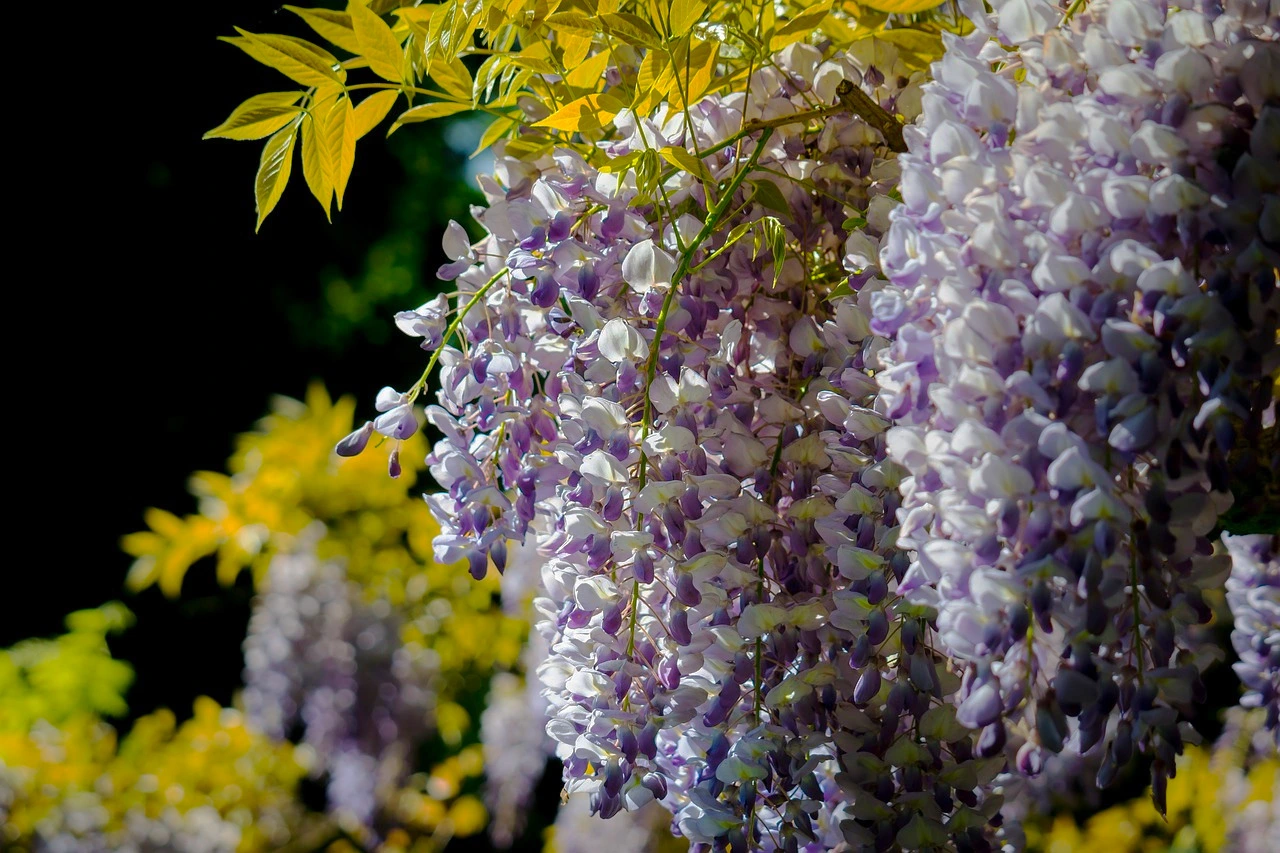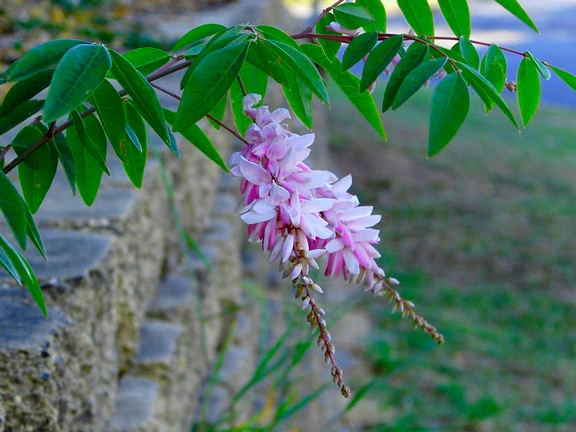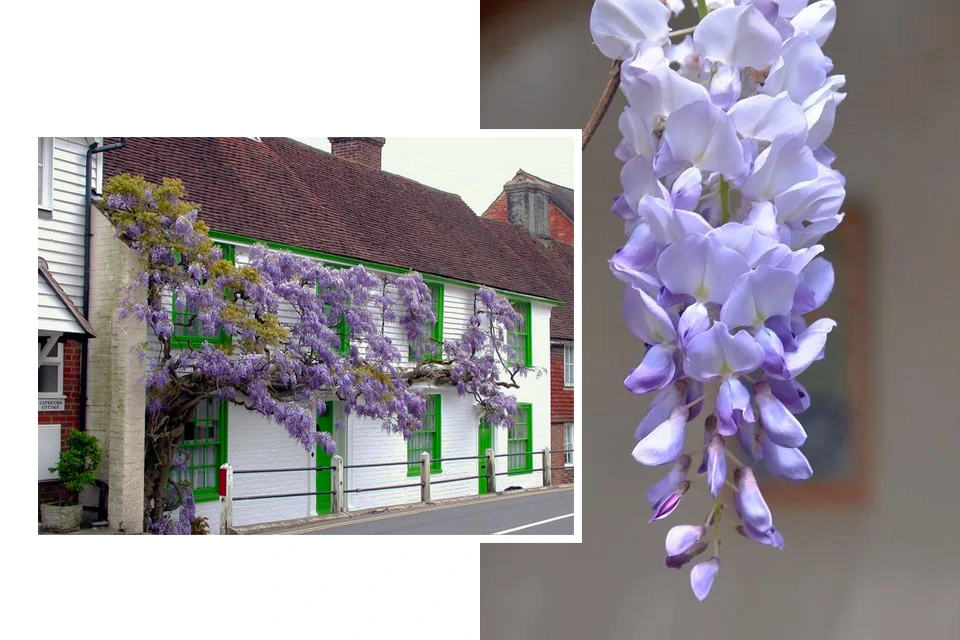Wisteria Flower Meanings – The language of flowers has been used for centuries to convey deep emotions and hidden messages. Every flower has a unique meaning that transcends its physical beauty.
Wisteria is one such flower that is rich in symbolism and meaning. In this article, we will explore the meaning and significance of the wisteria flower.
Table of Contents
Origin and history of wisteria
Wisteria is a genus of flowering plants that belongs to the legume family, Fabaceae. The genus includes ten species, with the most common being Wisteria sinensis and Wisteria floribunda. Wisteria is native to East Asia, particularly China, Korea, and Japan. It was introduced to Europe and North America in the 19th century.
Wisteria has a rich history in different cultures. In China, wisteria is associated with immortality and long life.
The flower was often depicted in art and literature, and it was used to decorate imperial gardens. In Japan, wisteria is a symbol of love, sensuality, and tenderness. It is often depicted in paintings and used in traditional tea ceremonies.
The symbolism of wisteria flower
Wisteria has a general symbolism of love, romance, and long life. However, the flower has different meanings in different cultures. In China, wisteria symbolizes immortality, while in Japan, it represents youth and vitality. In the language of flowers, wisteria signifies a welcoming of new beginnings and positivity.
The color of wisteria flowers also holds significance. The purple wisteria represents royalty, grace, and elegance. White wisteria signifies purity, innocence, and spirituality. Pink wisteria symbolizes love and affection, while blue wisteria represents serenity and calmness.
Here are just a few of the most common interpretations:
- Romance and Love: Wisteria flowers are often associated with romance and love, making them a popular choice for weddings, anniversaries, and other special occasions. The blooms are said to symbolize the bonds of love and affection between two people, as well as the sweetness and tenderness of a romantic relationship.
- Sensitivity and Intuition: Another interpretation of wisteria flowers is that they represent sensitivity and intuition. This may be because of their delicate appearance and soft colors, which suggest a gentle and intuitive nature.
- Longevity and Perseverance: Wisteria flowers are also thought to symbolize longevity and perseverance. This may be because the vines can live for many years and continue to grow and bloom even in adverse conditions.
- New Beginnings: Finally, wisteria flowers may represent new beginnings and fresh starts. This interpretation may be related to the fact that the blooms typically appear in the springtime, which is a season of renewal and growth.
Wisteria Flower in art and literature
Wisteria has been a popular subject in art and literature for centuries. The delicate and intricate flowers have been depicted in paintings, sculptures, and prints. In Japanese art, wisteria is often used as a motif in kimono designs, and it is a common subject in woodblock prints.
Wisteria is also a popular theme in literature and poetry. In the Japanese novel “The Tale of Genji,” wisteria is used as a metaphor for love and beauty.
See also Yellow Roses Meaning Guide
How to Use Wisteria Flowers in Your Life
Whether you’re a fan of gardening, home decor, or floral arrangements, there are many ways to incorporate wisteria flowers into your life. Here are a few ideas to get you started:
- Plant a wisteria tree in your yard or garden. Not only will this provide you with a beautiful and fragrant addition to your outdoor space, but it will also give you the opportunity to enjoy the many different meanings associated with these flowers.
- Use wisteria flowers in your home decor. Whether you’re creating a centerpiece for your dining room table or adding a touch of elegance to your living room, wisteria flowers can be a great way to add a pop of color and beauty to your space.
- Give wisteria flowers as a gift. If you’re looking for a thoughtful and meaningful gift for a loved one, a bouquet of wisteria flowers can be a wonderful choice. Whether you’re celebrating a special occasion or just want to show someone you care, these blooms are sure to delight you.
Wisteria flowers are known for their delicate and alluring beauty, but did you know that they also hold deep meanings and symbolism? These lovely blooms have been a favorite among gardeners and flower enthusiasts for centuries, and it’s easy to see why.
Wisteria is a type of flowering plant that belongs to the pea family. It’s native to China, Japan, and the Eastern United States and is known for its stunning purple, pink, and white blossoms. These flowers typically bloom in the late spring or early summer, and they’re often used in gardens, floral arrangements, and home decor.





